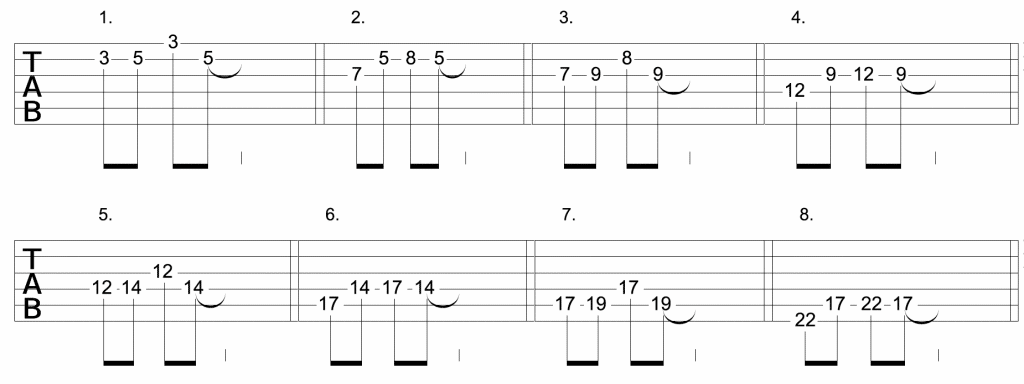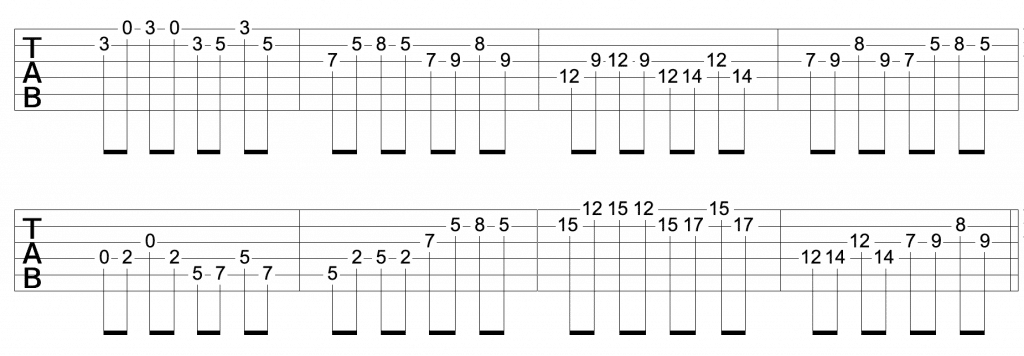How Riffs Can Help You Learn The Whole Fretboard Of Your Guitar, So You Can Play Anything You Want Without Limitations!
Being an instrument with 6 strings, the guitar is unique in that you can play a single riff in many different positions within the one octave. If you were playing a piano, or perhaps a horn instrument such as a saxophone or trumpet, you could not do this.
You may be asking yourself the question however, why play the same lick, if it’s going to be in the same octave, in multiple positions on the guitar. I mean it’s going to sound the same each time, seeing that it is in the same octave, right?
Well yes and no.
Today’s article is going to focus on why you should invest the time into moving riffs that you learn, around the fretboard so you can play any one riff within a variety of positions on your guitar.
Reasons For Playing The Same Riff In Multiple Positions
So why play the same riff in different positions on the fretboard?
• Each time you move a riff into a new position, it will fall differently under your fingers on the fretboard, presenting to you different phrasing possibilities as far as legato, bending, and picking techniques are concerned.
• Playing the same riff in different positions gives you access to different guitar scale patterns, opening up the fretboard to you and presenting to you the different relationships the neck of the guitar may otherwise be hiding.
• Extending this idea and moving your riffs not only into different positions but also different octaves will open up the fretboard further to you and multiply the possibilities again.
If this all sounds a little abstract to you, don’t worry. We will now look at some actual examples so you can get a clear picture of what we are talking about here, so you can implement this with the riffs you already know how to play on your guitar as well as future riffs you learn.
How To Move A Single Riff Around The Guitar Fretboard
For the purpose of this lesson, I am going to go through this process with a very simple riff, however the concept and approach is no different with more involved riffs.
Here is our riff:
We can take this lick and play it in many positions on the fretboard without even changing the octave it is in.
Here are some of the possibilities:
There are more possibilities than those I have outlined above. Can you find them?
Hint: you don’t necessarily have to play the riff over 2 adjacent strings. You could play it on a single string, or multiple non adjacent strings.
We can also play the same lick in a lower octave, in multiple positions:
And an upper octave, also in multiple positions:
As you can see, the possibilities are not quite endless, but they are many!
How To Take This Idea Further
So what do you do with all this?
Well a great training drill is to play all, or a selection of the possibilities of where you can play this lick, back to back without breaking time. This is great for getting very good at changing position and visualising licks and patterns on the fretboard of your guitar.
Here is an example of this:
I’ve really mixed things up in the example above. You can do similar, or perhaps you are more comfortable only switching between 2 or 3 positions to begin. It’s up to you. You can make it challenging without being too hard, and then go from there.
Another great great thing to do is to apply phrasing to each riff. By phrasing I am referring to bends, slides, hammer ons, pull offs etc.
When you move a riff to a new position, see how that phrasing will naturally change because of how the notes fall under your fingers. Here is an example of what I mean:
With the first riff I slide into the first note and bend the 3rd note. In the second riff I hammer on between the first and second notes. This was something that was not possible to do with the first riff because of the open strings involved.
I also slide into the last note of the second riff, something I could not do either with the first riff because the last note is an open string.
This is what I mean by different phrasing possibilities will present themselves depending on the position in which you play your riff.





